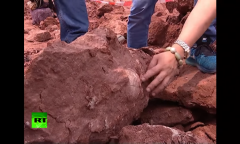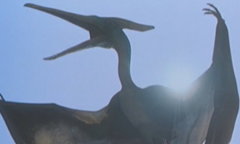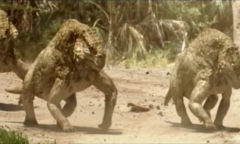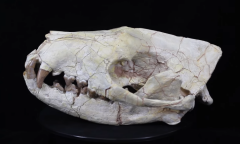By KM Diaz, | April 26, 2017
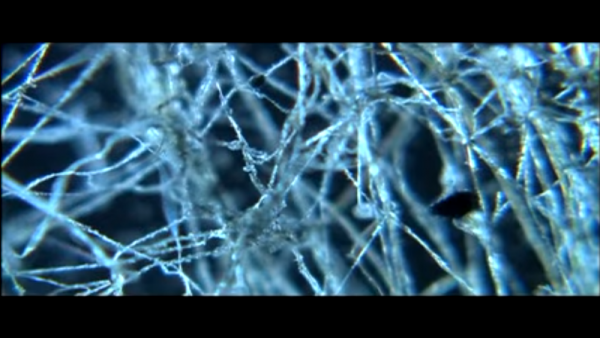
The 2.4 billion-year-old microscopic creatures possess a bundle of slender filaments similar to a broom. (YouTube)
Some fossils have been accidentally discovered in South Africa and are believed to be some of the oldest fungi ever found. If the finding is true, it could redefine our understanding of the evolution of multicellular life on earth.
The ancient fungus-like organisms, which was found 800 meters (2,600 feet) below the ground in South Africa's Northern Cape Province in the form of fossilized gas bubbles, are unusual because of their origin. The 2.4 billion-year-old microscopic creatures possess a bundle of slender filaments similar to a broom and may have multicellular and fungal characteristics, according to the study published in the journal Nature Ecology & Evolution.
Like Us on Facebook
At the moment, the most widely recognized oldest fossil trace of eukaryotes on Earth - where fungi, plants, and animals belong - dates to just 1.9 billion years ago.
Fungi are believed to have emerged on land, but these newfound organisms indicates that they could have grown and existed under the ancient ocean seabed. Birger Rasmussen, the co-author of the study and a geology professor at Curtin University in Bentley, Australia, says that they did not go out looking for these organisms.
Rasmussen analyzed a lava sample from the Ongeluk Formation to determine the age of the organisms. When he increased the magnification of the microscope, he noticed that the bubbles were full of preserved filaments that screamed life. He also realized that the area surrounding the lava was not 2.2 billion years old, but 2.4 billion years old.
The new date suggests that the fungus-like organisms survived in a dark place that lacks oxygen. These organisms give us a hint about the lifestyle of the early ancestors of fungi and eukaryotes.
Stefan Bengtson, the lead author of the study and a palaeobiologist at the Swedish Museum of Natural History, says that the history of the deep biosphere is poorly known. The gas bubbles in lava beneath the bottom of the sea may provide a place for fungi as far as 50 million years, and life existed more than two billion years ago - when fungi were assumed not to have yet existed.
However, some scientists who were not involved in the study have noted that the findings remain a theory that needs further research. The discovery challenges the thinking about where and when eukaryotes evolved. It also raises a question about whether scientists were looking at the wrong place to search for the fossil fungi and earliest eukaryotes.
-
Use of Coronavirus Pandemic Drones Raises Privacy Concerns: Drones Spread Fear, Local Officials Say

-
Coronavirus Hampers The Delivery Of Lockheed Martin F-35 Stealth Fighters For 2020

-
Instagram Speeds Up Plans to Add Account Memorialization Feature Due to COVID-19 Deaths

-
NASA: Perseverance Plans to Bring 'Mars Rock' to Earth in 2031

-
600 Dead And 3,000 In The Hospital as Iranians Believed Drinking High-Concentrations of Alcohol Can Cure The Coronavirus

-
600 Dead And 3,000 In The Hospital as Iranians Believed Drinking High-Concentrations of Alcohol Can Cure The Coronavirus

-
COVID-19: Doctors, Nurses Use Virtual Reality to Learn New Skills in Treating Coronavirus Patients


